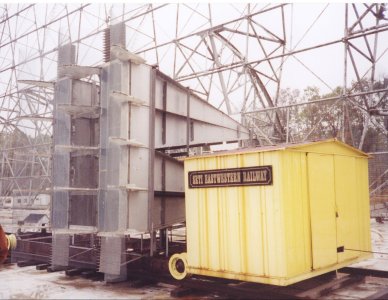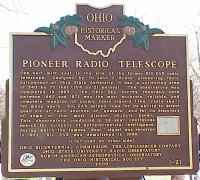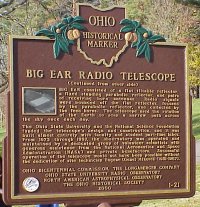|
Last Light at the Big Ear
|
In 1997, the famed Big Ear,
the Ohio State University Radio Observatory,
was bulldozed to make another
#@#$%^&* Golf Course
This had been a Radiotelescope that
the OSU football team could be proud of.
Microwave
Update '97 was in Sandusky, Ohio.
We were able to tear ourselves away from the nightlife
for a tour of the Big Ear. It had ceased operation
two weeks before. Here is the chart recorder
trace
of the last source observed:
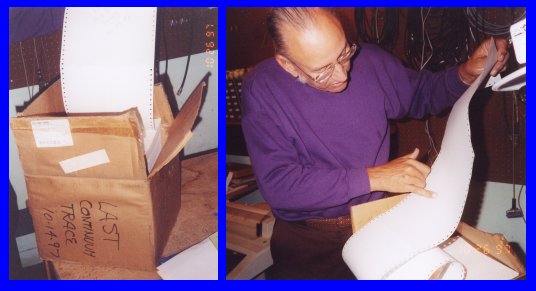
"First light" for a telescope is a time for celebration.
This was a sad occasion.
Here is how the Big Ear looked in greener days:
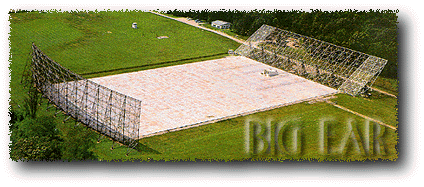
Designed by Professor John Kraus, W8JK, this antenna configuration
is now referred to as a Kraus radiotelescope. The fixed parabolic
reflector, on the left, focuses the beam on the flat reflector on the right.
The flat reflector tilts to adjust the elevation (declination, if you
are an astronomer) of the beam. The azimuth is fixed and sweeps (in
right ascension) with the rotation of the earth, so one slice of sky is scanned
every 24 hours. The area between the reflectors is flat and covered
with aluminum plates to reduce noise from the warm earth.
The feed horn is designed to take advantage of the image
reflection produced by the plates, effectively doubling the aperture of
the parabola.
Notice that the antenna is like my Periscope
Antenna but lying flat, and much bigger.
See www.bigear.org
for some history of the Big Ear, or the book Big Ear, by John Kraus,
for details. Here is a picture of Professor John Kraus at the dedication
of the historical marker in 1998
SETI League photos, used by
permission
Pictures at the wake of the Big Ear
by Bob Templin, W8ZSX (now W5OE), shown here standing
in front of the antenna
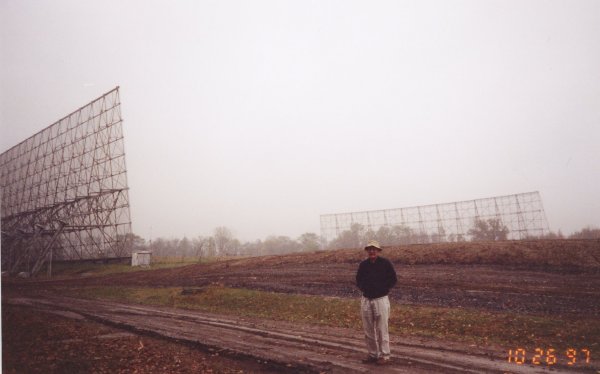
Parabolic Reflector
 Flat tilting reflector, from behind, showing tilt adjusters
for the flat reflector - aligned with an optical system
Flat tilting reflector, from behind, showing tilt adjusters
for the flat reflector - aligned with an optical system
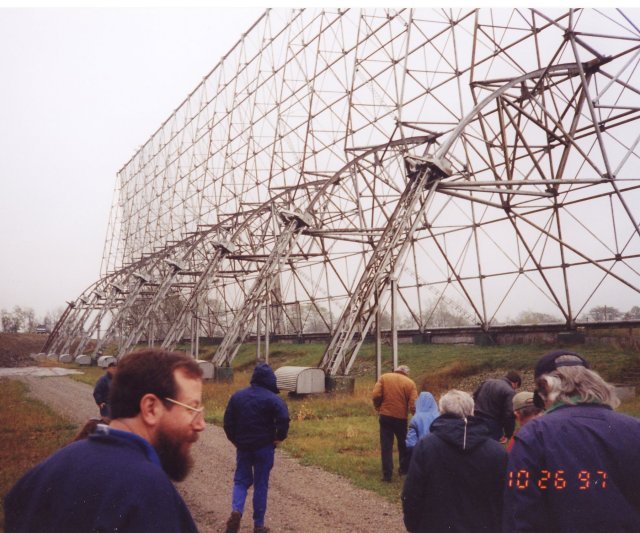
Flat plates between reflectors - the image of the reflector
reflected in the plates makes the effective aperture twice as large
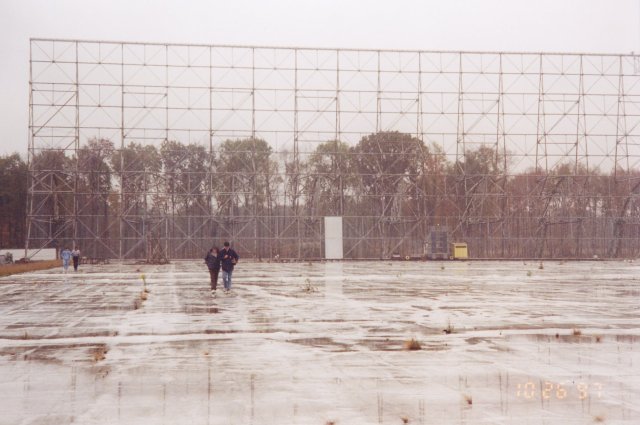
Feed horns - two feed horns to produce two beams separated
by a few seconds.
The background noise from each beam is subtracted from
the other. A radio source travels through one beam, then the other,
producing sequential positive and negative traces on the chart recorder,
while stray interference appears in both receivers simultaneously.
Each feedhorn is a vertical stack of two rectangular horns with internal
lens plates and curved screens around the aperture to reduce sidelobes.
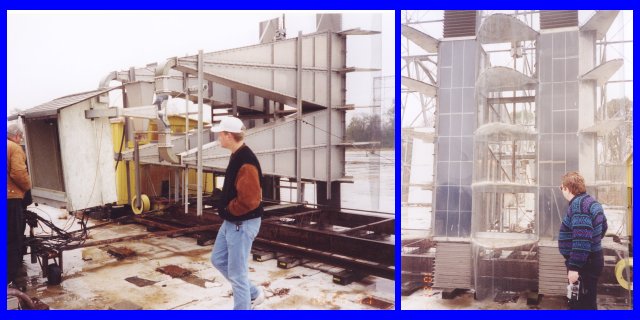 Feed trolley was added more recently, for SETI searches.
If a SETI was ever found, it could be tracked by moving the feed trolley.
Feed trolley was added more recently, for SETI searches.
If a SETI was ever found, it could be tracked by moving the feed trolley.
